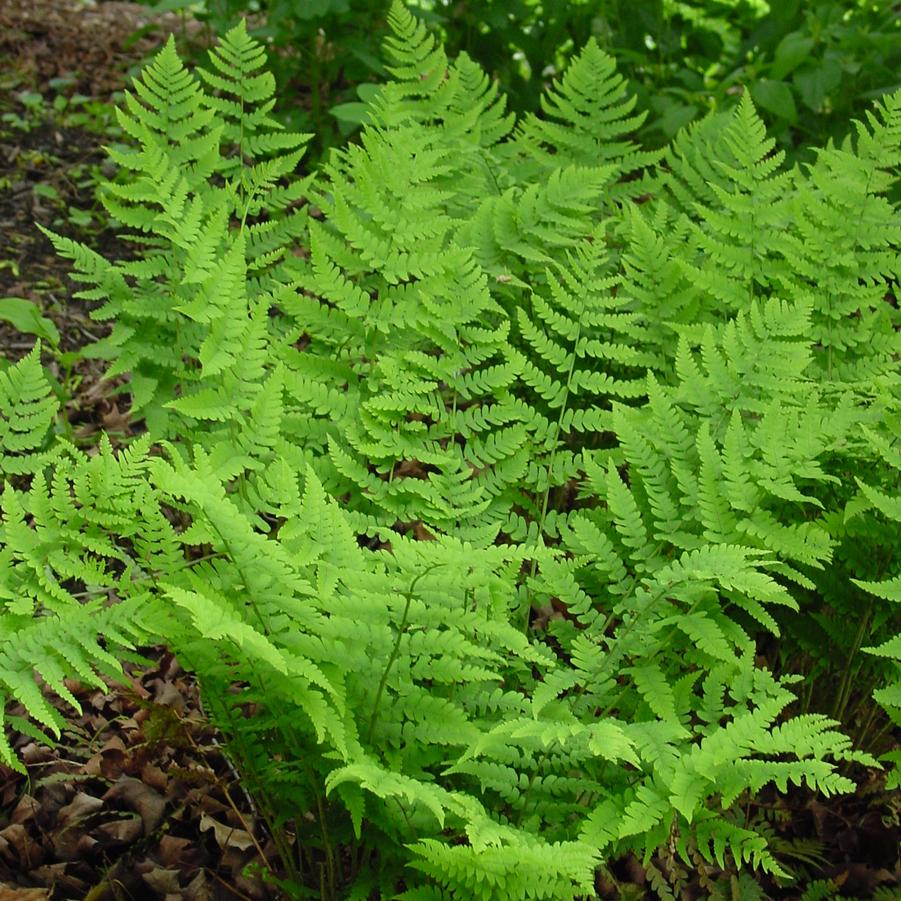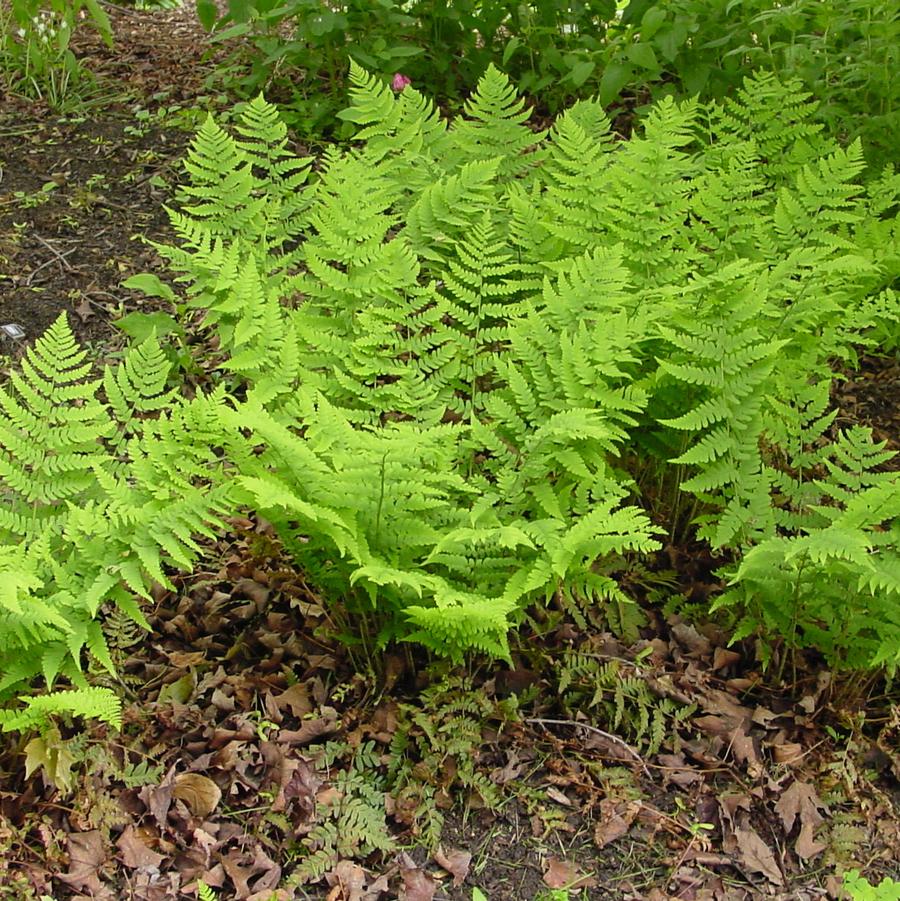



Plant Calculator
Enter the approximate length and width of the area you will be planting and click 'Calculate' to determine how many Dryopteris marginalis you will need.
Correct and successful spacing is complex and depends on project conditions. We encourage you to call us at 877-ECO-PLUG for project specific recommendations and further assistance.
Dryopteris marginalis
eastern woodfern (marginal woodfern)
- Category: Fern, Native
- Hardiness Zone: 3-8
- Height: 12-18 Inches
- Spread: 12-18 Inches
- Spacing: 12 Inches
The leathery leaves of Dryopteris marginalis are a beautiful addition to the woodland garden and can form a lovely and easy to maintain groundcover. A sturdy east coast native, it forms a tidy clump that will not spread and is very tolerant of dry shade conditions once it has established. Marginal wood fern is often found in shaded crevices of rocky ledges and bluffs from Newfoundland to Georgia, west to Oklahoma and Minnesota.
Click here to download technical information for growers:
Green Infrastructure
| • | Woodland |
Wetland Indicator Status
| • | Falcutative Upland (FACU) |
Plug Type
| • | Landscape Plug™ |
For Animals
| • | Deer Resistant |
Propagation Type
| • | Tissue culture |
Additional Information about Dryopteris marginalis
The leathery leaves of Dryopteris marginalis are a beautiful addition to the woodland garden and it forms a lovely, easy to maintain groundcover. A sturdy east coast native, it forms a tidy clump that will not spread and is very tolerant of dry shade conditions once it has established. Vase-shaped and reaching 1.5’-2’ tall and equally as wide, this evergreen fern provides good winter interest. It does surprisingly well in rocky dry sites and can tolerate drought.
Marginal wood fern is often found in shaded crevices of rocky ledges and bluffs from Newfoundland to Georgia, west to Oklahoma and Minnesota. It grows best in dappled to light shade with low to medium moisture. It prefers acidic soils but is adaptable to a wide range of soil conditions.
For best display of Dryopteris marginalis, keep it sheltered from strong winds. The fronds are different from other Dryopteris because of its twice compound leaflets lending it a more complex appearance.
Growing & Maintenance Tips for Dryopteris marginalis
Wood ferns prefer average to moist, rich, well-drained soils in shade or part sun. They tolerate drought very well once established. Needs protection from wind to keep the foliage looking nice. Best planted in masses in the shaded or woodland garden, as an accent or mixed with bulbs and other native perennials. To propogate, spore may be collected in late summer. Small crowns found near the main rosette can be carefully separated and trasplanted.
